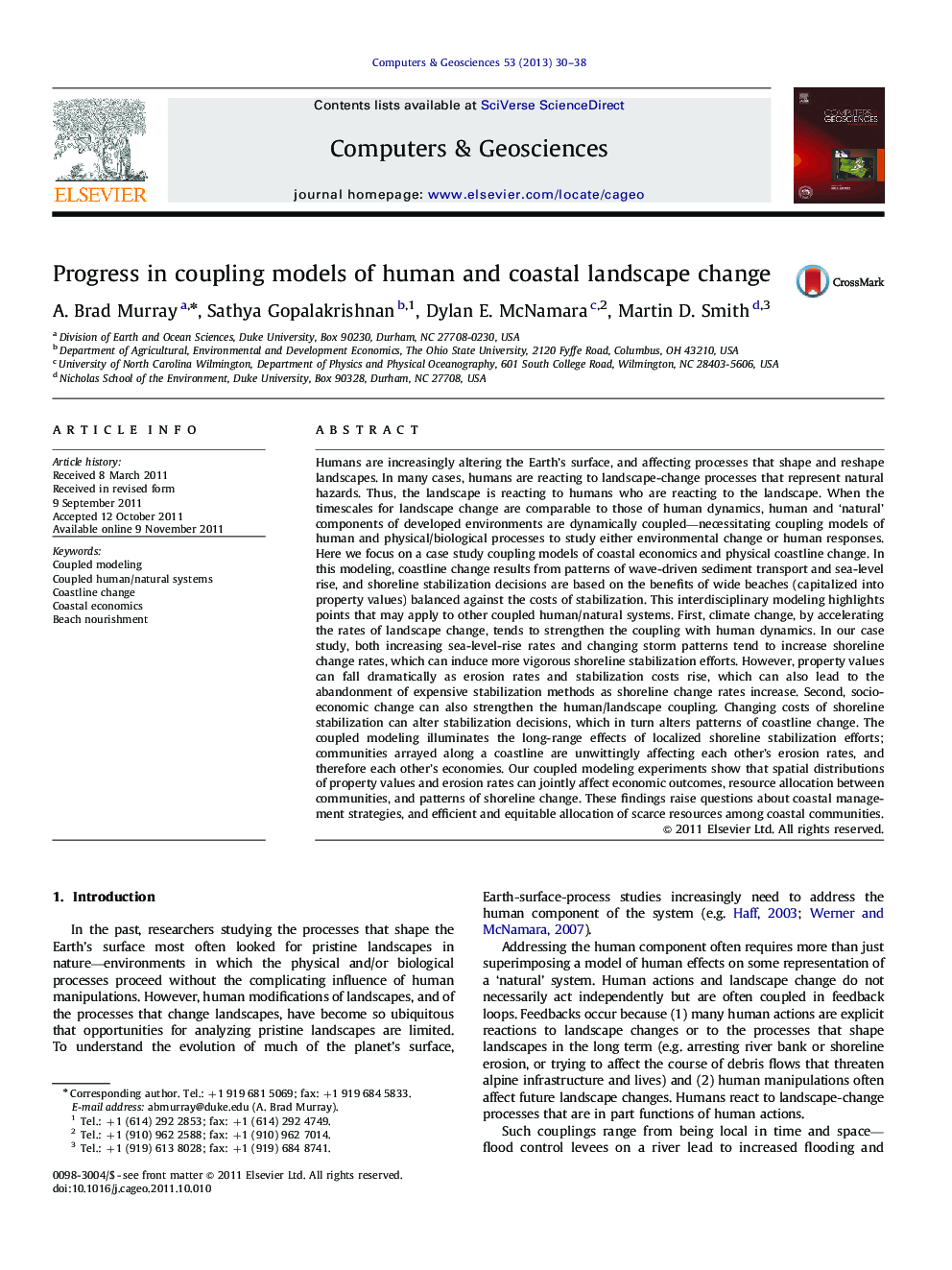| کد مقاله | کد نشریه | سال انتشار | مقاله انگلیسی | نسخه تمام متن |
|---|---|---|---|---|
| 507085 | 865092 | 2013 | 9 صفحه PDF | دانلود رایگان |

Humans are increasingly altering the Earth's surface, and affecting processes that shape and reshape landscapes. In many cases, humans are reacting to landscape-change processes that represent natural hazards. Thus, the landscape is reacting to humans who are reacting to the landscape. When the timescales for landscape change are comparable to those of human dynamics, human and ‘natural’ components of developed environments are dynamically coupled—necessitating coupling models of human and physical/biological processes to study either environmental change or human responses. Here we focus on a case study coupling models of coastal economics and physical coastline change. In this modeling, coastline change results from patterns of wave-driven sediment transport and sea-level rise, and shoreline stabilization decisions are based on the benefits of wide beaches (capitalized into property values) balanced against the costs of stabilization. This interdisciplinary modeling highlights points that may apply to other coupled human/natural systems. First, climate change, by accelerating the rates of landscape change, tends to strengthen the coupling with human dynamics. In our case study, both increasing sea-level-rise rates and changing storm patterns tend to increase shoreline change rates, which can induce more vigorous shoreline stabilization efforts. However, property values can fall dramatically as erosion rates and stabilization costs rise, which can also lead to the abandonment of expensive stabilization methods as shoreline change rates increase. Second, socio-economic change can also strengthen the human/landscape coupling. Changing costs of shoreline stabilization can alter stabilization decisions, which in turn alters patterns of coastline change. The coupled modeling illuminates the long-range effects of localized shoreline stabilization efforts; communities arrayed along a coastline are unwittingly affecting each other's erosion rates, and therefore each other's economies. Our coupled modeling experiments show that spatial distributions of property values and erosion rates can jointly affect economic outcomes, resource allocation between communities, and patterns of shoreline change. These findings raise questions about coastal management strategies, and efficient and equitable allocation of scarce resources among coastal communities.
Journal: Computers & Geosciences - Volume 53, April 2013, Pages 30–38